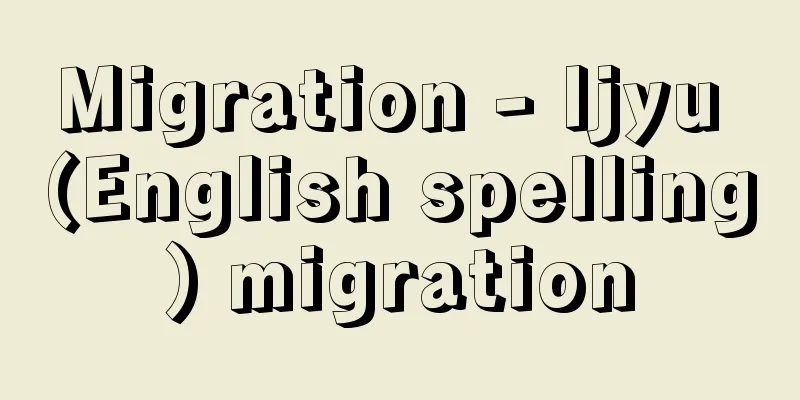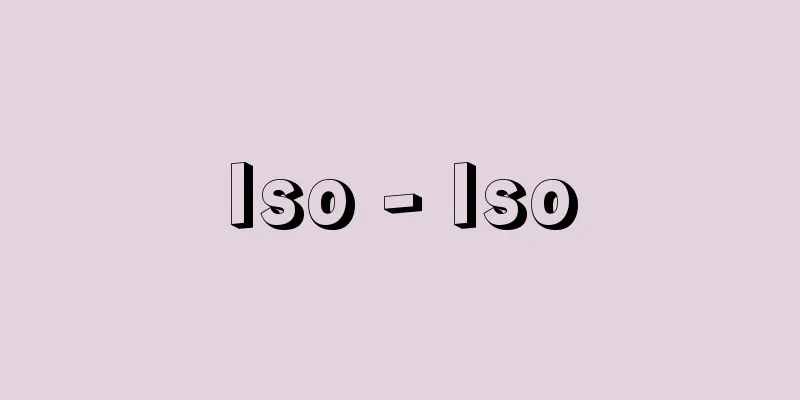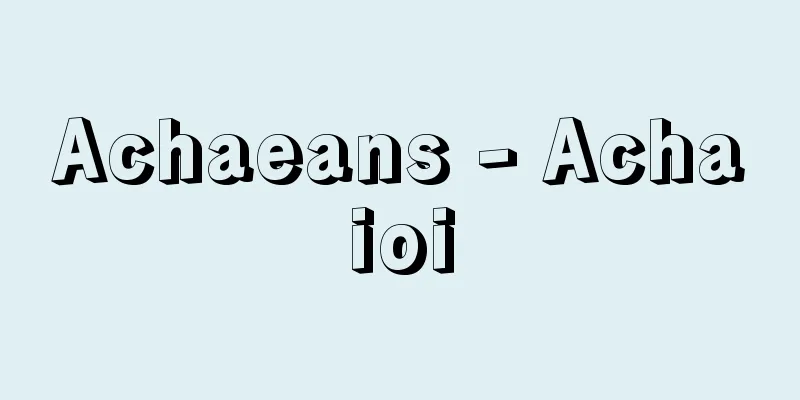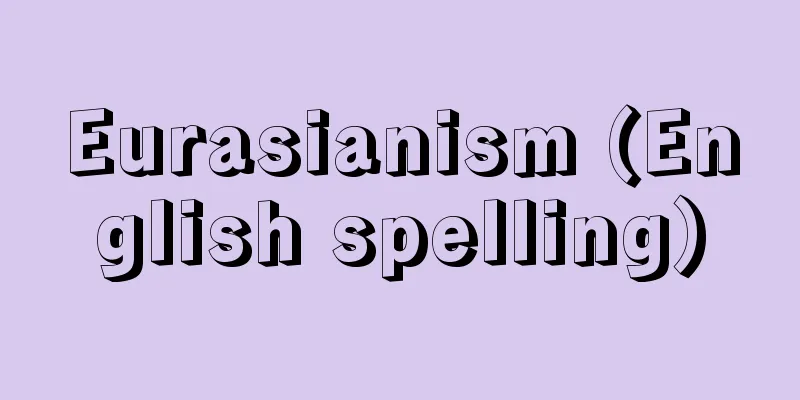influenza

|
What kind of disease is it? ●Main symptoms and course This is a disease caused by infection with the influenza virus, and compared to the common cold, the symptoms appear suddenly and are stronger. In most cases, it starts with chills, followed by high fever, sore throat, cough, runny nose, sneezing, headache, muscle pain, joint pain, abdominal pain, and diarrhea. Symptoms last for 3 to 4 days, and as the fever starts to subside, the systemic symptoms gradually subside. The progress is usually good, but attention must be paid to secondary infections, which can occur due to bacterial infections in other organs, particularly the lungs and bronchi, causing inflammation. In particular, elderly people, infants, and people with heart disease or diabetes can develop serious complications such as influenza encephalopathy, myocarditis, pericarditis, and myositis, which can lead to death or leave some patients with severe aftereffects. Vaccination is an effective preventative measure, but because influenza virus types change every year, the vaccine must be administered annually. In the past, it was not possible to reliably distinguish between cold symptoms and this condition, but now kits that can quickly distinguish the illness are widely available, making an accurate diagnosis possible. ●How the disease causes and symptoms developInfluenza viruses are broadly classified into types A, B, and C, but type A is the type that causes serious and large epidemics, and the virus that is prevalent varies from year to year. Influenza viruses infect the cells of the respiratory system of other people through aerosols (less than 10 microns in diameter) suspended in the air when a patient in the acute phase coughs or sneezes. After infection, the virus remains dormant for 24 hours and continues to grow. The virus replicates and is released in columnar epithelial cells in the nose and throat, alveolar cells in the lungs, mucus gland cells, macrophages, etc., and infects surrounding cells. Systemic symptoms are thought to be caused by cytokines such as tumor necrosis factor and interferon 6, which are produced to defend the body against infected cells. ●Characteristics of the disease: Epidemics are seen all over the world, and a major feature of the disease is that it occurs in large groups. In Japan, epidemics generally occur from winter to early spring. EBM checks on common treatments and care [Treatment and care] Use antiviral drugs within 2 days of onset of symptoms. [Rating] ☆☆☆☆☆ [Evaluation Points] Highly reliable clinical studies have confirmed that if zanamivir hydrate or oseltamivir phosphate is used early (within 2 days) after the onset of influenza A or B, it is effective in shortening influenza symptoms by approximately 1 to 3 days. However, it is uncertain whether it suppresses complications. (1)-(27) Amantadine hydrochloride or rimantadine (not available in Japan), which were previously used for influenza A, are no longer recommended except in special cases due to the emergence of resistant strains. (2) [Treatment and care] Prevention through vaccination [Rating] ☆☆☆☆☆ [Evaluation points] The effectiveness of the vaccine for people aged 60 and over has been confirmed by highly reliable clinical studies. (28)-(30) [Treatment and care] Suppress various symptoms with medication [Rating] ☆☆ [Evaluation points] Medications are used to relieve various symptoms. For headaches, muscle pain, and fever, it is recommended to use acetaminophen rather than nonsteroidal anti-inflammatory drugs. In particular, for influenza in children, the nonsteroidal anti-inflammatory drugs mefenamic acid, diclofenac sodium, and salicylic acid drugs (such as aspirin) are generally not to be used for fever reduction purposes. [Treatment and care] If secondary infection is confirmed, use antibiotics [Evaluation] ☆☆ [Evaluation points] When there is a clear bacterial infection, such as bacterial pneumonia, acute otitis media, or acute sinusitis, which occur as complications of influenza virus infection, the use of antibiotics makes sense. [Treatment and care] Get nutrition from easily digestible foods [Rating] ☆☆ [Treatment and care] Drink plenty of fluids [Rating] ☆☆ [Treatment and care] Humidify if the air is dry [Rating] ☆☆ [Treatment and care] Gargle and wash your hands when you come back from outside [Evaluation] ☆☆ [Evaluation points] It is supported by the mechanism of disease onset as well as the opinions and experiences of experts. [Treatment and care] Avoid going out in crowded places [Rating] ☆☆ [Evaluation points] This is supported by the mechanism of disease onset, expert opinion, and experience. It is also believed that wearing a mask may be able to prevent the disease. [Treatment and care] If you have a fever, refrain from bathing. [Rating] ☆☆ [Treatment and care] If you have a fever, use thin bedding to allow heat to escape. [Rating] ☆☆ [Evaluation points] It is supported by the mechanism of disease onset as well as the opinions and experiences of experts. Checking commonly used drugs with EBM Anti-influenza virus drug [Medicinal use] Effective against both influenza types A and B [Drug name] Relenza (zanamivir hydrate) (1) to (27) [Rating] ☆☆☆☆☆ [Drug name] Tamiflu (oseltamivir phosphate) (1)-(27) [Rating] ☆☆☆☆☆ [Evaluation points] Highly reliable clinical studies have confirmed that zanamivir hydrate or oseltamivir phosphate can shorten symptoms by about 1 to 3 days when used early after the onset of influenza A and B. It is unclear whether they can suppress complications. Amantadine hydrochloride or rimantadine (not available in Japan), which were previously used for influenza A, are no longer recommended except in special cases due to the emergence of resistant strains. (2) If you have a fever [Drug name] Acetaminophen (31)(32) [Rating] ☆☆☆☆☆ [Evaluation points] When nonsteroidal anti-inflammatory drugs, aspirin, and acetaminophen are used on patients with cold or flu symptoms, there is highly reliable clinical research that shows that aspirin has a greater side effect. Since the use of nonsteroidal anti-inflammatory drugs raises concerns about side effects such as peptic ulcers and kidney damage, the use of the safer acetaminophen is recommended. For severe sneezing, runny nose, and stuffy nose [Medicinal use] Non-pyrine cold medicine [Medicinal name] PL Granules [Evaluation] ☆☆ [Medicinal use] Antihistamine [Drug name] Restamin Kowa (diphenhydramine hydrochloride) [Rating] ☆☆ [Drug name] Tabegil (clemastine fumarate) [Rating] ☆☆ [Evaluation points] Each drug is supported by expert opinion and experience. When you have a severe cough (tussives, anti-inflammatory drugs) [Drug name] Mejicon (dextromethorphan hydrobromide hydrate) [Rating] ☆☆ [Drug name] Codeine phosphate (codeine phosphate hydrate) [Rating] ☆☆ [Drug name] Brufen (Ibuprofen) [Rating] ☆☆ [Drug name] Neuzym/Leftose (lysozyme hydrochloride) [Rating] ☆☆ [Evaluation points] Each drug is supported by expert opinion and experience. When sticky phlegm is produced (anti-inflammatory drugs, expectorants, antibiotics) [Drug name] Mucosolvan (ambroxol hydrochloride) [Rating] ☆☆ [Drug name] Claris/Clarisid (clarithromycin) [Rating] ☆☆ [Evaluation points] Each drug is supported by expert opinion and experience. Overall, the most reliable treatment at present <br /> Relieves sudden symptoms Influenza is an illness caused by infection with the influenza virus, and is characterized by the sudden onset of severe symptoms compared to the common cold. The treatment that has been proven effective at present is the use of anti-influenza virus drugs, which shorten the period during which people suffer from these severe symptoms. If you receive drug treatment early after the onset of symptoms, the duration of symptoms will be shortened by one day. It has been confirmed that Relenza (zanamivir hydrate) and Tamiflu (oseltamivir phosphate) are effective in shortening the duration of influenza's painful symptoms by about 1 to 3 days when used early after the onset of influenza for type A and type B influenza. Therefore, for patients who are thought to have influenza early after the onset of symptoms, one of these drugs will be used unless there is a special reason. It is especially recommended that elderly people over 65 years old, pregnant women, women within 2 weeks of giving birth, and those with underlying diseases that make them more likely to become severe, etc., use of drugs proactively. Amantadine hydrochloride or rimantadine (not available in Japan), which were previously used for influenza A, are no longer recommended except in special cases due to the emergence of resistant strains. (2) Symptomatic treatment for high fever and muscle pain Symptomatic treatment for painful symptoms such as high fever and muscle pain, especially the use of antipyretics and analgesics, makes perfect sense as long as you are mindful of side effects, and I think everyone would agree that it is effective. However, in the case of children, the use of antipyretics and analgesics is considered cautious. Acetaminophen (acetaminophen) is considered a very safe drug and is used for the purpose of reducing fever and analgesia in children with influenza. However, non-steroidal anti-inflammatory drugs such as Pontal (mefenamic acid), Voltaren (diclofenac sodium) and salicylic acid drugs (such as aspirin) are generally not to be used for the purpose of reducing fever. This is because the use of these drugs can lead to influenza encephalopathy. When it comes to influenza, there is a theory that using antipyretics too easily may actually hinder the body's natural healing process, making recovery take longer, but clinical studies have not shown any evidence to support this. (1)Glezen WP. Clinical practice. Prevention and treatment of seasonal influenza. N Engl J Med 2008; 359:2579. Source: "EBM: A book that explains correct treatment" Information about the book "EBM: A book that explains correct treatment" |
|
どんな病気でしょうか? ●おもな症状と経過 インフルエンザウイルスの感染によっておこる病気で、ふつうのかぜ症候群に比べ、急激に強い症状が現れるものです。多くは寒気で始まり、高熱がでて、のどの痛み、せき、鼻水、くしゃみ、頭痛、筋肉痛、関節痛、腹痛、下痢(げり)などがおもな症状となります。症状は3、4日間続き、熱が下がり始めると、徐々に全身症状もおさまってきます。 通常は経過は良好なのですが、肺や気管支を中心にほかの臓器で細菌感染が発生し、炎症がおきる二次感染には注意が必要です。とくに、お年寄りや乳幼児、心臓病や糖尿病のある人では深刻な合併症であるインフルエンザ脳症、心筋炎(しんきんえん)、心外膜炎(しんがいまくえん)、筋炎などがおこって、死亡に至る場合や重い後遺症が残る患者さんもいます。 ワクチンの接種は有効な予防法ですが、インフルエンザウイルスのタイプは毎年変異するので、ワクチンはその年ごとに接種する必要があります。 以前はかぜ症候群との判別が確実ではありませんでしたが、現在ではすぐに判別できるキットが普及し、正確な診断が可能になりました。 ●病気の原因や症状がおこってくるしくみ インフルエンザの原因となるウイルスはA型、B型、C型に大別されますが、深刻で大きな流行を引きおこすのはA型で、その年によって流行するウイルスは違います。インフルエンザウイルスは、急性期の患者さんのせきやくしゃみによって、空気中に浮遊するエアロゾル(直径10ミクロン未満)を介してほかの人の呼吸器系の細胞に感染します。感染後24時間潜伏し、増殖していきます。鼻やのどの円柱上皮細胞(えんちゅうじょうひさいぼう)、肺内の肺胞(はいほう)細胞、粘液腺(ねんえきせん)細胞やマクロファージなどのなかで、ウイルスが複製・放出され、周囲の細胞に感染します。全身症状は、感染細胞に対して体を防御する目的でつくられる腫瘍壊死因子(しゅようえしいんし)や、インターフェロン6などのサイトカインによっておこると考えられています。 ●病気の特徴 世界中で流行がみられ、集団発生するのが大きな特徴であり、わが国での流行は一般的に冬から春先にかけておこっています。 よく行われている治療とケアをEBMでチェック [治療とケア]発病後2日以内であれば、抗ウイルス薬を用いる [評価]☆☆☆☆☆ [評価のポイント] A型あるいはB型のインフルエンザに対して、ザナミビル水和物もしくはオセルタミビルリン酸塩を発病後早期(2日以内)に用いれば、インフルエンザの症状を約1~3日短縮する効果があることが非常に信頼性の高い臨床研究によって確認されています。しかし、合併症を抑えるかどうかは不確かです。(1)~(27) 以前、A型のインフルエンザに使用されていたアマンタジン塩酸塩もしくはリマンタジン(日本では未発売)は現在、耐性株の出現により特別な場合を除いては推奨されなくなりました。(2) [治療とケア]ワクチンによって予防する [評価]☆☆☆☆☆ [評価のポイント] 60歳以上のお年寄りに対するワクチンの効果は、非常に信頼性の高い臨床研究によって確認されています。(28)~(30) [治療とケア]薬によって各種の症状を抑える [評価]☆☆ [評価のポイント] 各種の症状を緩和(かんわ)するために薬が用いられます。頭痛、筋肉痛、発熱に対しては、非ステロイド抗炎症薬でなく、アセトアミノフェンの使用を勧めています。とくに子どものインフルエンザに対して、非ステロイド抗炎症薬のメフェナム酸、ジクロフェナクナトリウムおよびサリチル酸系の薬(アスピリンなど)は、解熱目的での使用を原則としてしないことになっています。 [治療とケア]二次感染が確認されたら、抗菌薬を用いる [評価]☆☆ [評価のポイント] インフルエンザウイルス感染による合併症としておこる細菌性肺炎、急性中耳炎、急性副鼻腔炎(きゅうせいふくびくうえん)など、細菌による感染症が明らかな場合には、抗菌薬の使用が理にかなっています。 [治療とケア]消化のよい食べ物で栄養をとる [評価]☆☆ [治療とケア]水分を十分にとる [評価]☆☆ [治療とケア]空気が乾燥している場合は加湿する [評価]☆☆ [治療とケア]外から帰ったらうがい、手洗いをする [評価]☆☆ [評価のポイント] 病気のおこってくるしくみや、専門家の意見や経験から支持されています。 [治療とケア]人混みへの外出を避ける [評価]☆☆ [評価のポイント] 病気のおこってくるしくみや、専門家の意見や経験から支持されています。また、マスクをすることで予防が可能になる可能性があると考えられます。 [治療とケア]熱のある場合、入浴は控える [評価]☆☆ [治療とケア]熱がある場合は、布団を薄めにして、熱を逃がすようにする [評価]☆☆ [評価のポイント] 病気のおこってくるしくみや、専門家の意見や経験から支持されています。 よく使われている薬をEBMでチェック 抗インフルエンザウイルス薬 [薬用途]A、B型ともに有効 [薬名]リレンザ(ザナミビル水和物)(1)~(27) [評価]☆☆☆☆☆ [薬名]タミフル(オセルタミビルリン酸塩)(1)~(27) [評価]☆☆☆☆☆ [評価のポイント] ザナミビル水和物もしくはオセルタミビルリン酸塩は、A型およびB型のインフルエンザに対して、発病後早期に用いると、症状を約1~3日短縮する効果が非常に信頼性の高い臨床研究によって確認されています。合併症を抑えるかどうかは不確かです。 以前A型インフルエンザに使用されていたアマンタジン塩酸塩もしくはリマンタジン(日本では未発売)は現在、耐性株の出現により特別な場合を除いては推奨されなくなりました。(2) 熱がある場合 [薬名]アセトアミノフェン(アセトアミノフェン)(31)(32) [評価]☆☆☆☆☆ [評価のポイント] 非ステロイド抗炎症薬、アスピリン、アセトアミノフェンをかぜもしくはインフルエンザ症状の患者さんに使用したとき、アスピリンの副作用が大きいという非常に信頼性の高い臨床研究があります。非ステロイド抗炎症薬を使うと消化性潰瘍(かいよう)や腎障害(じんしょうがい)の副作用が心配されるので、より安全なアセトアミノフェンの使用が勧められます。 くしゃみ、鼻水、鼻づまりが強いとき [薬用途]非ピリン系感冒薬 [薬名]PL顆粒 [評価]☆☆ [薬用途]抗ヒスタミン薬 [薬名]レスタミンコーワ(ジフェンヒドラミン塩酸塩) [評価]☆☆ [薬名]タベジール(クレマスチンフマル酸塩) [評価]☆☆ [評価のポイント] いずれの薬も専門家の意見や経験から支持されています。 せきが激しいとき(鎮咳薬(ちんがいやく)、抗炎症薬) [薬名]メジコン(デキストロメトルファン臭化水素酸塩水和物) [評価]☆☆ [薬名]リン酸コデイン(コデインリン酸塩水和物) [評価]☆☆ [薬名]ブルフェン(イブプロフェン) [評価]☆☆ [薬名]ノイチーム/レフトーゼ(リゾチーム塩酸塩) [評価]☆☆ [評価のポイント] いずれの薬も専門家の意見や経験から支持されています。 ねっとりした痰(たん)がでるとき(抗炎症薬、去痰薬、抗菌薬) [薬名]ムコソルバン(アンブロキソール塩酸塩) [評価]☆☆ [薬名]クラリス/クラリシッド(クラリスロマイシン) [評価]☆☆ [評価のポイント] いずれの薬も専門家の意見や経験から支持されています。 総合的に見て現在もっとも確かな治療法 急激な症状をやわらげる インフルエンザウイルスの感染によっておこる病気で、いわゆるふつうのかぜに比べて急激に強い症状が現れるという特徴があります。現在効果が確かめられている治療は、こうした強い症状に悩まされる期間を短くする抗インフルエンザウイルス薬を使ったものです。 発病後早期に薬による治療を受ければ、症状の続く期間が1日短縮 リレンザ(ザナミビル水和物)およびタミフル(オセルタミビルリン酸塩)は、A型およびB型のインフルエンザに対して、発病後早期に用いれば、インフルエンザのつらい症状が続く期間を約1~3日短縮する効果が確認されています。したがって、発病後早期のインフルエンザと考えられる患者さんでは、特別な理由がなければ、いずれかの薬が使われます。とくに65歳以上の高齢者、妊娠中の女性や出産後2週間までの女性、基礎疾患があって重症化しやすい場合などは積極的に薬を使用することが勧められています。 以前A型インフルエンザに使用されていたアマンタジン塩酸塩もしくはリマンタジン(日本では未発売)は現在、耐性株の出現により特別な場合を除いては推奨されなくなりました。(2) 高熱、筋肉痛には対症療法 つらい症状である高熱や筋肉痛などへの対症療法、とくに解熱鎮痛薬の使用も副作用に留意するなら十分理にかなっていて、有効性は誰もが認めるところと思われます。 ただし、子どもの場合、解熱鎮痛薬の使用は慎重に考えられています。アセトアミノフェン(アセトアミノフェン)は安全性の高い薬と考えられていて、子どものインフルエンザに対して、解熱鎮痛目的で使用されています。しかし、非ステロイド抗炎症薬のポンタール(メフェナム酸)、ボルタレン(ジクロフェナクナトリウム)およびサリチル酸系の薬(アスピリンなど)は、解熱目的での使用を原則としてしないことになっています。これはこれらの薬を使うことによって、インフルエンザ脳症になる場合があるからです。 インフルエンザでは、安易に解熱薬を使うとかえって自然治癒力を妨げて治るのに時間がかかるのではないかという説もあるようですが、臨床研究ではそのような証拠は認められていません。 (1)Glezen WP. Clinical practice. Prevention and treatment of seasonal influenza. N Engl J Med 2008; 359:2579. 出典 法研「EBM 正しい治療がわかる本」EBM 正しい治療がわかる本について 情報 |
Recommend
Iwasaki grass cicada - Iwasaki grass cicada
An insect belonging to the order Hemiptera and th...
Perissodactyla - Perissodactyla
〘Noun〙 = Kitai-i (odd-ungulate) Source: The Select...
X-ray spectrometer
… [Other spectrometers] A spectroscope is a devic...
connoisseur - lover
A person of refined taste. In particular, a person...
Foundation beam - Kisobar
…(a) Independent footing foundation: A single fou...
Drive - Drive (English), Trieb (German)
It is primarily a psychoanalytic concept, based on...
Tsumori Kunimoto - Tsumori Kunimoto
1023-1102 A Shinto priest and poet from the mid-t...
Monthly loan money - Gesshakusen
A type of usury practiced by central government of...
Vulgarized materialism
Also known as mechanistic materialism. A materiali...
Bunkuen - Bunkuen
Land managed by public or private organizations is...
Phosphate fertilizer (phosphoric acid fertilizer)
A fertilizer applied to supply phosphate to the so...
Le Corbusier
1887‐1965 Born in Switzerland, he was a French arc...
Pocket mouse
In the strictest sense, it is a small, long-tailed...
Bilfinger, GB (English spelling) BilfingerGB
...This group is made up of disciples who inherit...
Haliaeetus vocifer (English spelling)
... Sea eagles are made up of eight species in th...









